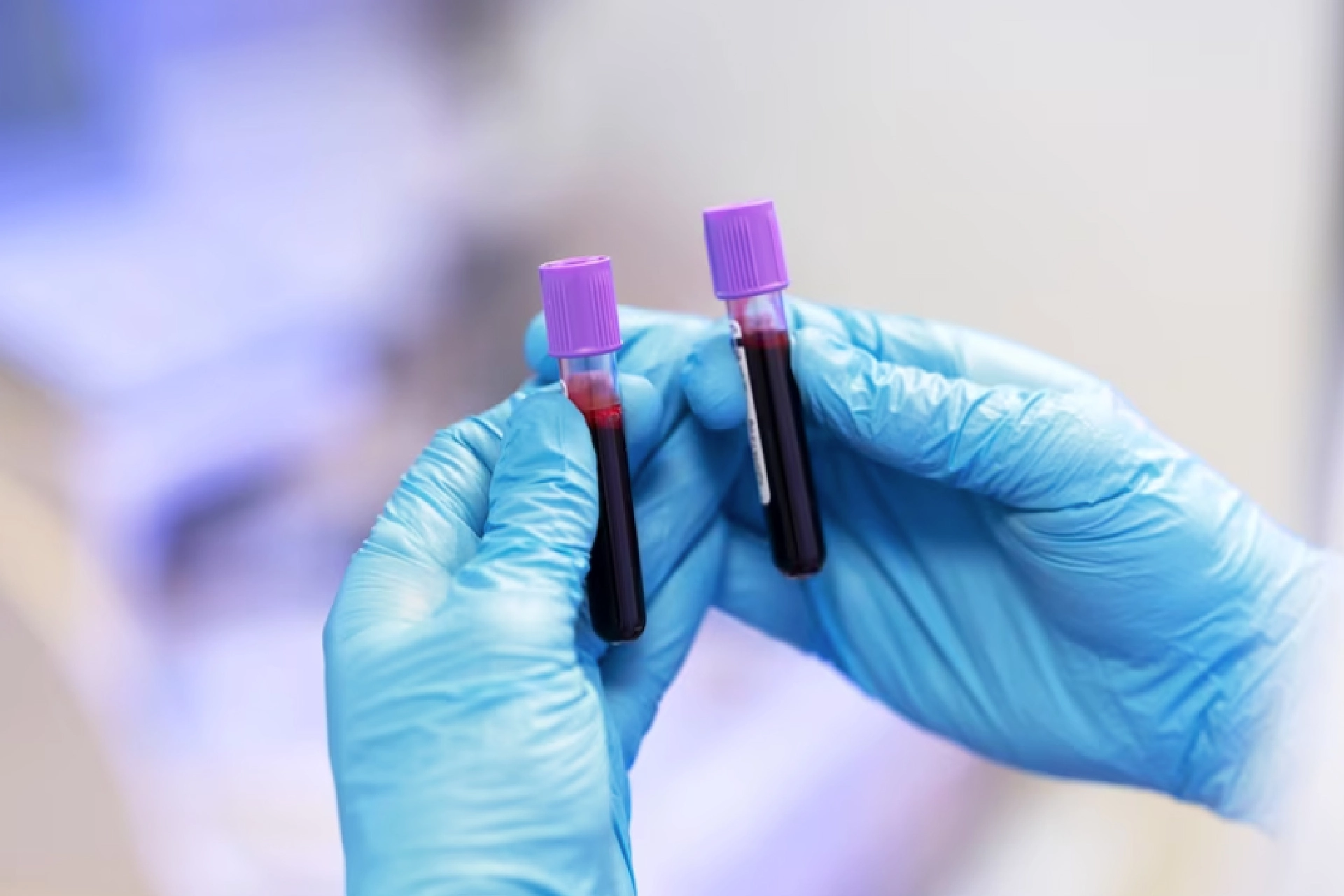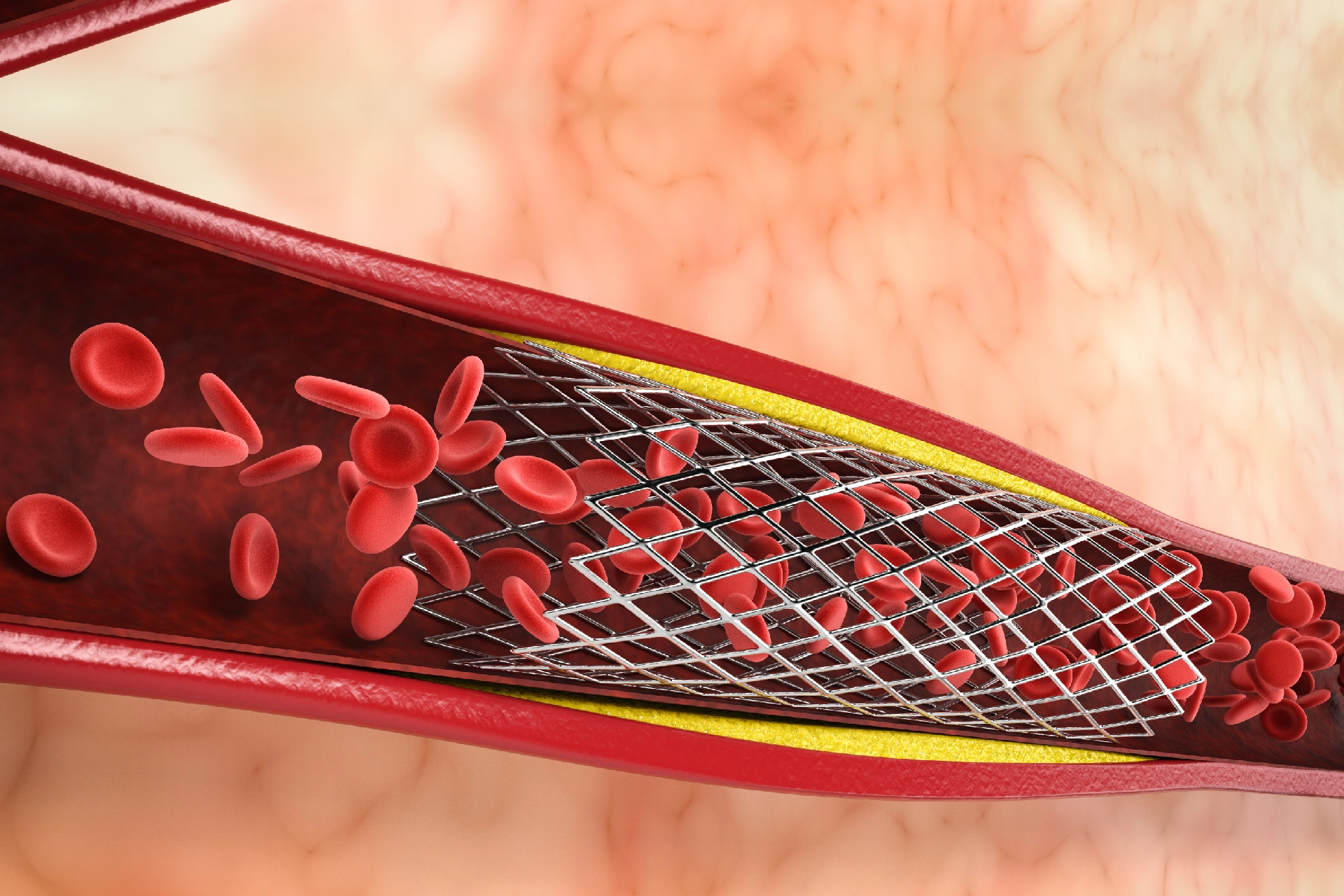Health Tests | 4 min read
What is a Bone Marrow Biopsy? An Important Health Diagnostic Tool
Medically reviewed by
Table of Content
Key Takeaways
- A bone marrow test identifies any issues with the marrow
- A bone marrow biopsy is an invasive procedure and can hurt
- The biopsy is done at the upper ridge of the hip bone
The bone marrow is a soft, spongy tissue present inside hollow bones. It contains stem cells and blood vessels that help create new stem cells [1]. This includes red blood cells (RBC), white blood cells (WBC), and platelets [2]. The different types of stem cells can also help produce bone cells, cartilage, fat and connective tissue.
A bone marrow biopsy is done in order to identify whether the marrow is functioning properly. A bone marrow sample is either aspirated or biopsied, depending on what part of the marrow is being tested. This sample is then sent to a pathological laboratory, where it is tested to check the level of blood cells and stem cells present in the marrow.
Read on to learn more about a bone marrow biopsy
What Is a Bone Marrow Test?
A bone marrow test identifies issues with a patient’s bone marrow based on information gleaned from the marrow sample. Pathological analysis of the sample is done in order to identify issues. The analysis gives us a detailed result with in-depth information on the status of your marrow and blood cells.
bone marrow test often consists of two parts: a bone marrow aspiration, and a bone marrow biopsy. While the marrow aspiration is focused on obtaining a sample of the fluid portion of the marrow, the biopsy focuses on the solid portion, i.e. the spongy tissue. They are usually combined in one procedure. However, in some instances, the fluid aspiration is done before the tissue biopsy. Many healthcare providers choose to use the same needle for both parts of the test.
Additional Read: Why is it Important to Know When Your WBC Count is High or Low?
What is a bone marrow biopsy?
A bone marrow biopsy is a technique used to identify blood and bone marrow disorders. In the bone marrow, blood cells are created. During the process, your doctor will extract a tiny sample of bone marrow. Then, a pathologist analyses the samples from the bone under a microscope for evidence of illness.
A bone marrow biopsy is required to confirm a probable diagnosis of many illnesses, including blood disorders and certain malignancies.
When would a doctor tell you to get a bone marrow biopsy?
A bone marrow biopsy gives essential information that your doctor can use to:
Assess or identify a condition: If your doctor notices an unusually high red blood cell count in a blood sample, they may recommend a bone marrow biopsy. A biopsy can aid in diagnosing blood problems, cancer, the causes of unexplainable fevers or infections, and other conditions.Cancer stage: Cancer staging determines how far cancer has gone. A bone marrow biopsy can determine whether or not tumours have spread to your marrow. In addition, it can detect the presence of a malignancy in your bone marrow.Track treatment progress: A bone marrow biopsy may be performed by your clinician to determine whether or not therapy is effective. If you are undergoing cancer therapy, you may be subjected to frequent bone marrow biopsies. The findings can indicate if your bone marrow creates enough healthy blood cells following treatment.It can also be used to identify if a donor is a suitable match for an allogeneic stem cell transplant. For example, in some cases, a person with an insufficient number of healthy blood cells may require new, healthy stem cells from a donor. This requires that the cells from the donor and recipient match.
Ways to prepare for a bone marrow biopsy
Your healthcare practitioner will walk you through the process and provide you with preparation advice. For instance, you might need to fast (have no food or liquids) the night before if you receive a sedative to aid with the discomfort the day of the treatment.
Your medical history and current medicines should be fully disclosed to your doctor. Inform them of the following:
- Past experience with bleeding issues (such as haemophilia)
- Anything you take, notably blood thinners (anticoagulants)
- Any pills or vitamins you are taking
- Any allergies to medications
- If you are pregnant, your provider will also need to know
Limitations of Bone Marrow Biopsy
This form of biopsy has limits depending on the location because the bone marrow contents fluctuate depending on the parts of your body. Therefore, aspiration and biopsy performed at one place may not be typical of the entire, or it may miss localized regions of bone marrow involvement with malignancy or other diseases.
The approach and competence of the healthcare professional also impact the operation, and the quality of the samples obtained. For example, a bone marrow biopsy's most common adverse effect is bleeding, which can be difficult if a person has a low platelet count.
Things to expect during a bone marrow biopsy
It can be performed at the office or hospital of your healthcare practitioner. The complete procedure takes around 30 minutes. You will be conscious during the operation, but your physician will freeze the biopsy location to make you comfortable (local anaesthetic).
You will change into a dressing gown before the surgery. To help you relax, your physician may provide a sedative.
Typically, the steps are as follows:
- Depending on where the biopsy will be performed, you may lie on your side or your belly. The rear of your hip bone is the most popular location for bone marrow biopsies (posterior iliac crest)
- A numbing agent will be injected through your skin to the surface of the bone after your healthcare professional has cleaned your skin with an antiseptic
- A little incision will be made there, and a special biopsy needle will be inserted into your bone. Next, your bone marrow will be drawn out of the liquid using a tiny syringe linked to the hand. It is known as Aspirating bone marrow
- They will insert a needle with a hollowed-out core to extract a little portion of the sponge-like tissue from your marrow. As a result of the needle's removal of a "core," or cylinder-shaped, tissue sample, this sort of biopsy is known as a core biopsy
- Your healthcare practitioner will take out the needle with the sample. They'll put pressure on your skin to halt any bleeding, then cover the area with a bandage
Your healthcare professional will submit the sample to a lab so that it may be checked for disease-related indicators.
Types of results and their meaning
Your bone marrow sample will be evaluated by a pathologist using a microscope. After reviewing the pathologist's results, your provider will discuss the next measures with you. Depending on your results, your doctor could confirm a diagnosis, request more testing, or suggest or modify a course of therapy.
Find out what your results signify for you by asking your provider.

How Is a Bone Marrow Biopsy Done?
There are two kinds of marrow in your body: red and yellow. A bone marrow test is done with red marrow. Red marrow is found in flat, hollow bones. For adults, the hip bone or the vertebrae are common areas where red marrow is found. Hence, a bone marrow biopsy is usually done from the hip.
The procedure starts with you being given local anesthesia at the site of the test. This is usually the back of the hip bone. You may also opt for IV sedation. A medical professional will also check your blood pressure and heart rate beforehand. Usually, this procedure is done by a hematologist or oncologist.
After this, a hollow needle is inserted into the bone. This is done at the top ridge of the hip bone. Sometimes it may be done at the breastbone or the lower leg bone for toddlers under 18 months. Then the marrow is drawn into the syringe, which can be either the aspirated fluid or the biopsy tissue sample. If both are being tested, aspiration is done first. For the tissue sample, a larger needle may be required.
Due to the invasive nature of this test, patients tend to experience pain during and after the procedure. Hence, in addition to local anesthesia, IV sedation is also given [3]. This is an option for people who feel anxious or have a low threshold for pain tolerance. After the test is done, the pain reduces. There may still be some amount of discomfort present, which may last for up to a day. It is recommended to keep the area dry and away from water for 24 hours.
Additional Read: RBC Count Test: Why is it Important and What is the RBC Normal Range?
Why Is Bone Marrow Test Done?
An examination of your bone marrow and blood cells provides comprehensive information on the health of these tissues.
Numerous disorders can be diagnosed with a bone marrow test. These consist of:
- Anemia
- Blood cell disorders such as leukopenia, leukocytosis, thrombocytopenia, thrombocytosis, pancytopenia, and polycythemia, in which too few or too many of a particular kind of blood cell are generated
- Cancers of the bone marrow or blood, such as multiple myeloma, lymphomas, and leukemias
- Cancer that has progressed to the bone marrow from another location, such as the breast
- Hemochromatosis
- Unknown origin fevers
A bone marrow test can be ordered by your physician for a variety of reasons. The test results can shed light on quite a few points:
- It shows whether the bone marrow is healthy. This includes understanding whether the marrow is creating a normal level of blood cells, like WBCs, RBCs, and platelets.
- It can identify the level of iron in the blood, helping detect genetic disorders like hemochromatosis.
- It can identify cancer, anemia, lymphoma, and various blood cell-related ailments.
- It can provide information on RBC and WBC count and production, including their individual levels in the body.
- In case of an existing disorder or disease, it can support the evaluation and diagnosis. This helps to create a specific treatment plan, or modify an existing one.
As you can see, a bone marrow test is an important diagnostic tool. If you need to get a bone marrow test done for yourself or your loved ones, get it done as soon as possible. This way, you can either rule out a disorder or start an appropriate course of treatment. Book health tests on Bajaj Finserv Health and get your test done promptly. You can even find specialists, hospitals near you, and the bone marrow test cost in just a few clicks.
References
- https://www.cancer.gov/publications/dictionaries/cancer-terms/def/bone-marrow
- https://www.ncbi.nlm.nih.gov/pmc/articles/PMC4938003
- https://www.ncbi.nlm.nih.gov/pmc/articles/PMC3542425/
Disclaimer
Please note that this article is solely meant for informational purposes and Bajaj Finserv Health Limited (“BFHL”) does not shoulder any responsibility of the views/advice/information expressed/given by the writer/reviewer/originator. This article should not be considered as a substitute for any medical advice, diagnosis or treatment. Always consult with your trusted physician/qualified healthcare professional to evaluate your medical condition. The above article has been reviewed by a qualified doctor and BFHL is not responsible for any damages for any information or services provided by any third party.




